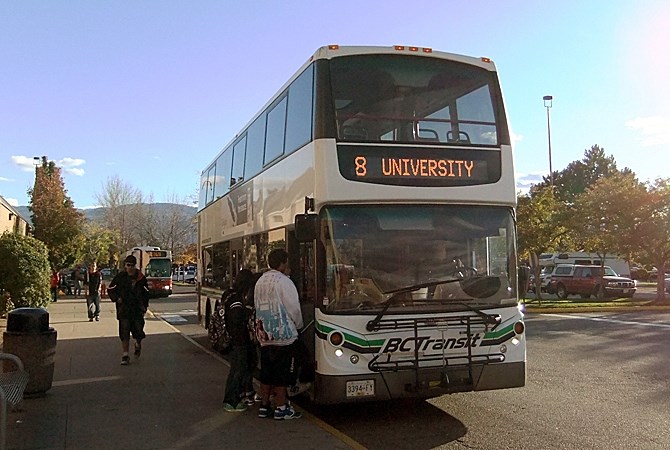
Image Credit: commons.wikimedia.org
January 20, 2016 - 10:30 AM
'WE DO PHYSICALLY HAVE CAMERAS ON SOME OF THE BUSES JUST NOTHING IS RECORDING'
KELOWNA - It’s been almost 15 months since a Kelowna man was stabbed to death on the #8 Kelowna bus, and local bus drivers are being assaulted every month, but the vast majority of Kelowna's onboard cameras are still little more than decoys.
Scott Lovell, the president of the Amalgamated Transit Union in Kelowna, says he’s torn between letting the public know the truth about the decoy cameras. He hopes letting the public know will spur B.C. Transit into action, though even an empty housing does provide some deterrent.
“If the ruffians choose to do things on a bus… and they think they are being recorded, they are less likely,” he says. “We do physically have cameras on some of the buses just nothing is recording.”
Lovell says onboard cameras and microphones would not only keep drivers and passengers safe, they would also be useful in exonerating or prosecuting drivers who have been alleged to commit crimes while forward facing cameras would be useful when collisions happen.
B.C. Transit also acknowledged the usefulness of cameras shortly after a Kelowna man was stabbed onboard a bus on Banks Road. A spokesperson told Canadian Press that surveillance cameras would be rolling on some buses in the Central Okanagan by spring 2015. Then in October 2015, Transit spokesperson John Barry said it would be at least another year before any cameras were online here or on any other Okanagan buses.
The delay is because Kelowna is not one of the two B.C. cities chosen for a one-year pilot study to determine the cost and functionality of installing them on all buses in the B.C. Transit fleet. Buses in Kamloops and Victoria were outfitted with cameras in April 2015 and earlier this month, buses in those cities were also equipped with microphones.
Lovell sees audio recording as being possibly even more important than video. He says verbal assaults happen much more frequently than physical assaults.
“We are verbally assaulted every day,” he says. “Threatening a bus driver is a criminal offence so I think audio would make a bigger impact in the long run.”
On Jan. 8, a Kelowna bus driver was assaulted while on break at the Queensway Bus Exchange, an area that is supposed to be under video surveillance by the city. Police have refused to comment if the camera captured the assault but there have been no arrests. When police asked the public for help identifying the man they did not provide a photo.
“When something happens on a bus the police go to surveillance cameras in the area,” Lovell says. “That’s because they work. We just need more of them.”
B.C. Transit spokesperson John Barry says it cost them $40,000 to purchase, install and integrate each camera on the 100 buses chosen for the pilot program. And that number doesn’t include audio microphones. That means in order to equip the roughly 1,000 buses in across the province B.C. Transit will have to spend more than $4 million.
And according to B.C. Transit, that’s only the first of several steps.
“The first step would be for us to complete the pilot, we’d have a set of recommendations we have to go through, a bit of a review process and approval to see if we can get the budget,” Barry says.
To contact a reporter for this story, email Adam Proskiw at aproskiw@infonews.ca or call 250-718-0428. To contact the editor, email mjones@infonews.ca or call 250-718-2724.
News from © iNFOnews, 2016